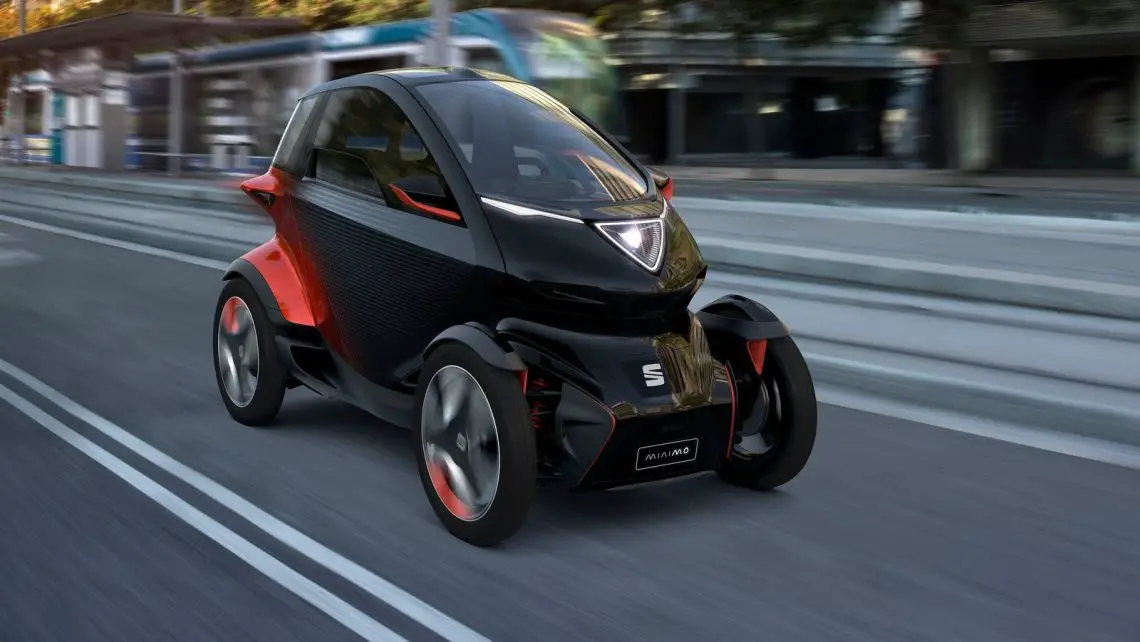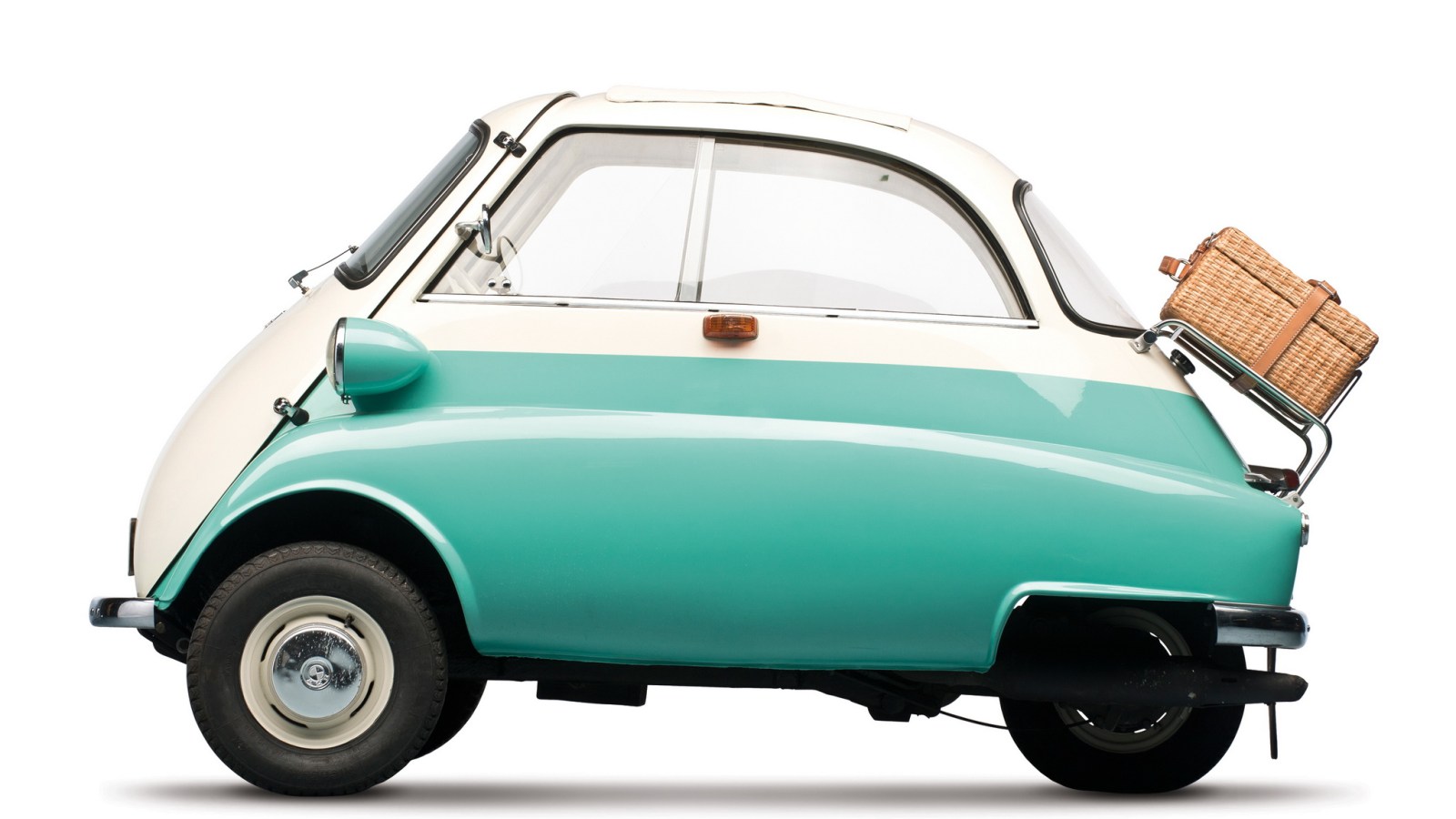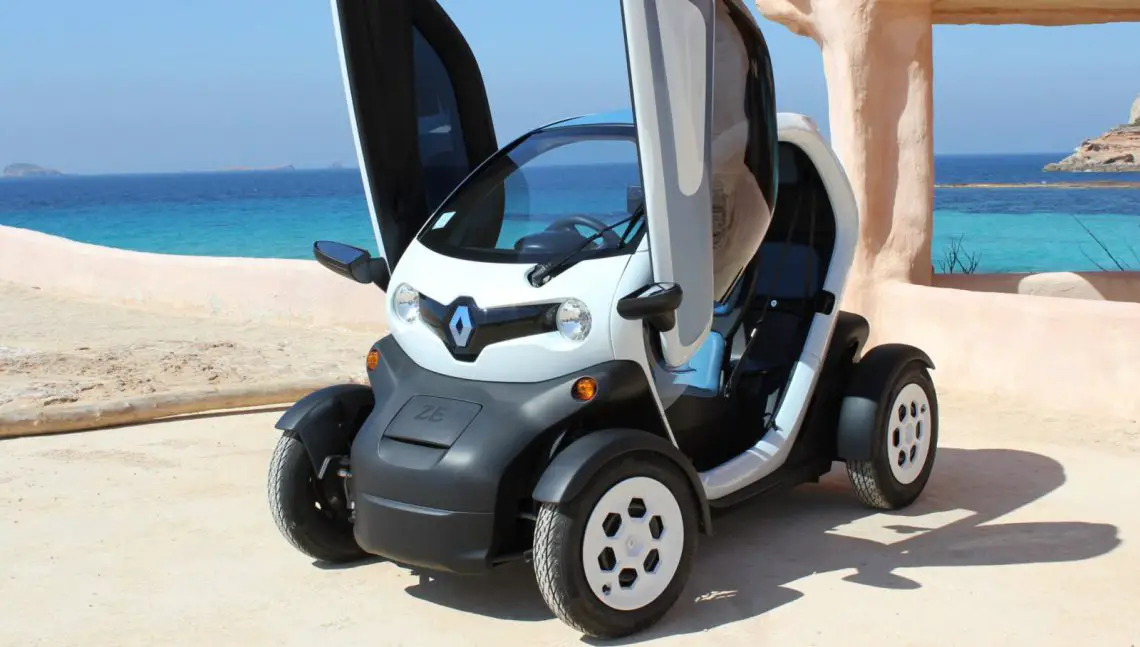Did you know: ten unusual dwarf cars
BMW Isetta
One of the most famous dwarf cars is the BMW Isetta. This little car is only 2.28 meters long and 1.38 meters wide. The Italian Iso invented the Isetta in 1953, but the model did not catch on. After 1,000 units, Iso ended production in 1955 and sold the license to BMW. For the ailing BMW, the Isetta was a huge success, and between 1955 and 1962, as many as 160,000 were built. The Isetta is famous for its single door at the front and compact track width at the rear.
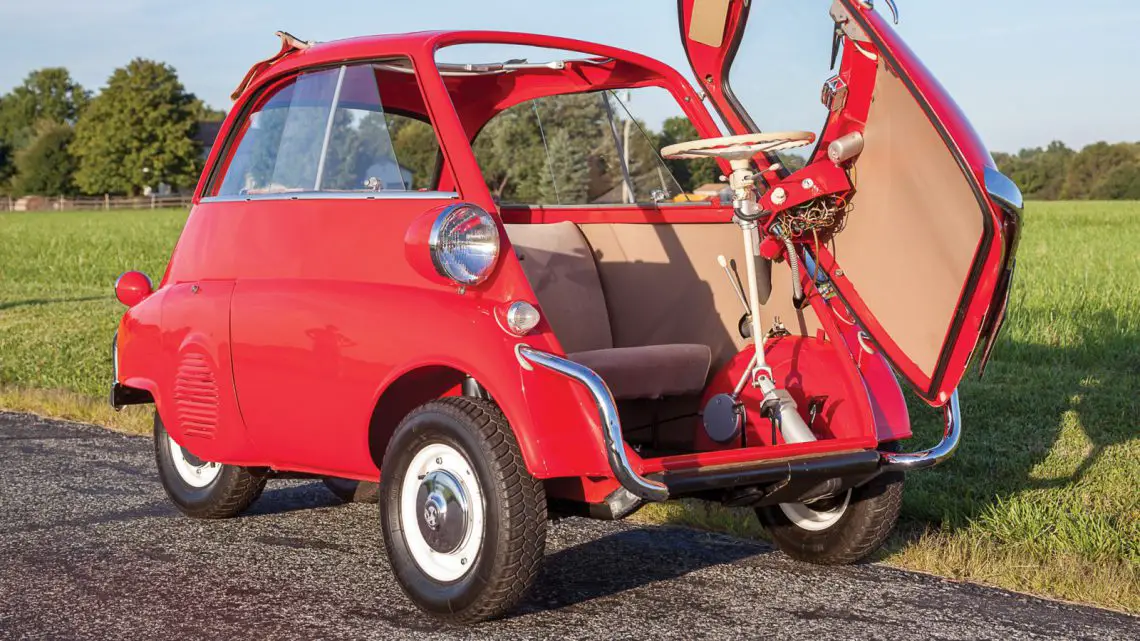
Vespa 400
Most people quickly think of the legendary scooters when they hear the word “Vespa,” but the manufacturer also built cars. Piaggo launched the Vespa 400 in 1957, whose design was very reminiscent of the Fiat 500. Like the 500, Vespa 400 has the engine in the rear and a convertible roof, but the car could not match the popularity of the 500. Between 1957 and 1961, 34,000 were built. To this day, it is the only car built by Vespa.
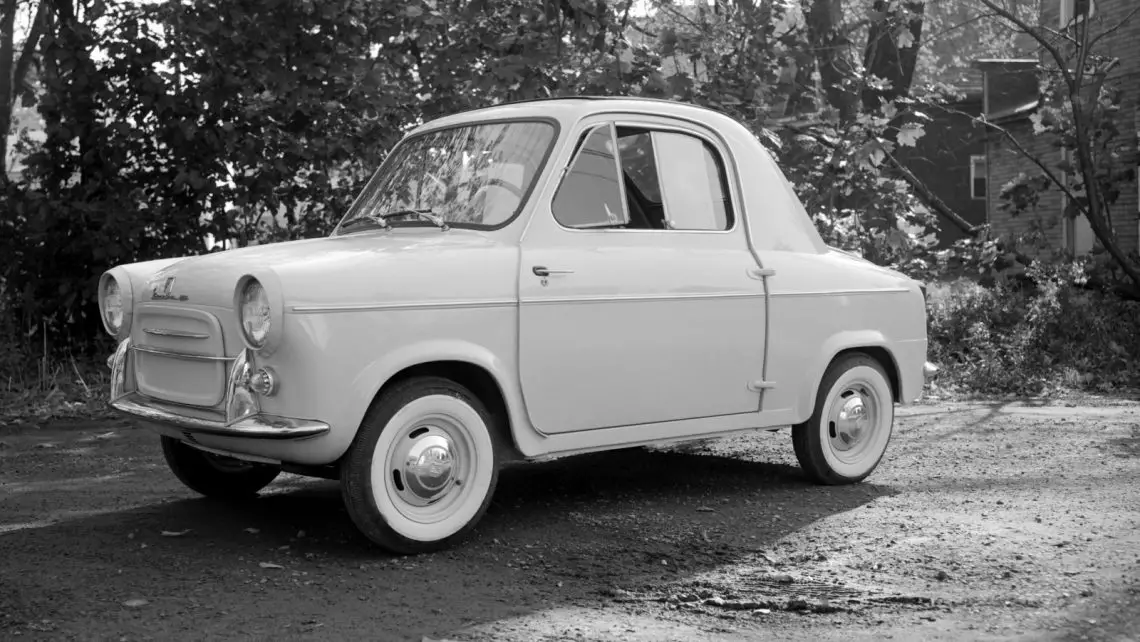
Crosley Wagon
In the United States you wouldn’t expect a microcar anytime soon, yet Crosley tried to conquer the market with its models. From 1939 to 1952, Crosley produced dwarf cars that closely resembled large American models. For example, the range included a small version of the Willy’s Jeep (the Farm-O-road) and a pickup truck. Perhaps the nicest model is this 1952 Wagon, which, with its white walls, fits perfectly into the time frame.
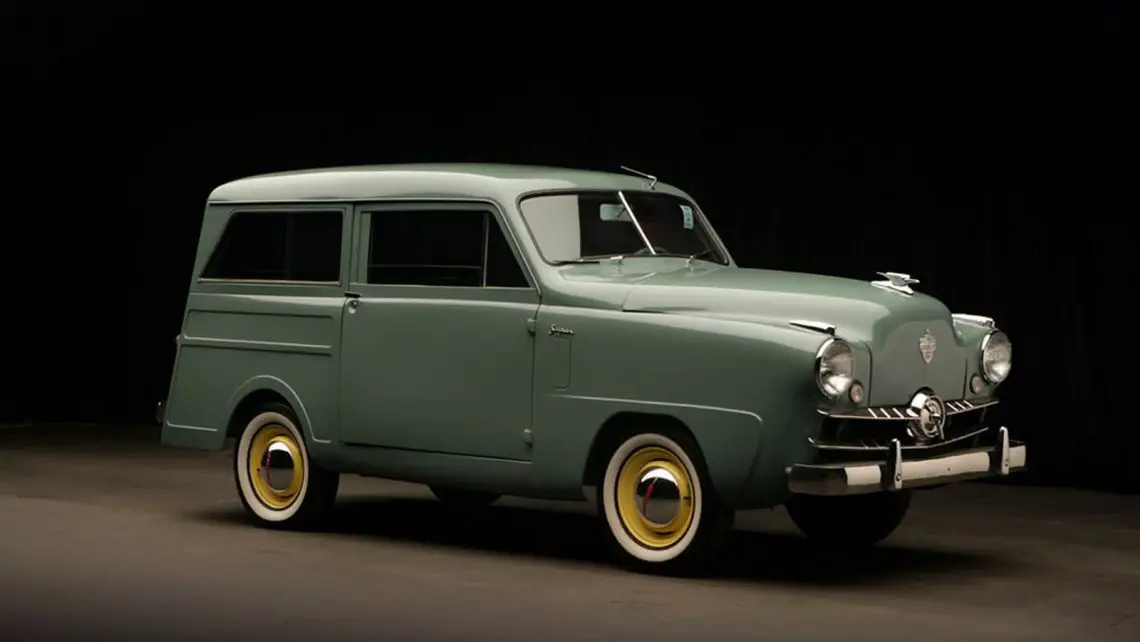
Messerschmitt KR200
A narrow body, entry through the roof and a special steering wheel, the Messerschmitt Kabinenroller is obviously inspired by an airplane. This is not surprising since Messerschmitt was originally an aircraft manufacturer. After World War II, however, it was banned from producing airplanes, so the brand decided to focus on midget cars. Messerschmitt was deeply in debt and the car was extremely expensive to produce. When the manufacturer regained permission to build airplanes in 1956, it lost interest in dwarf cars. However, the KR200 was still produced under license until 1964.
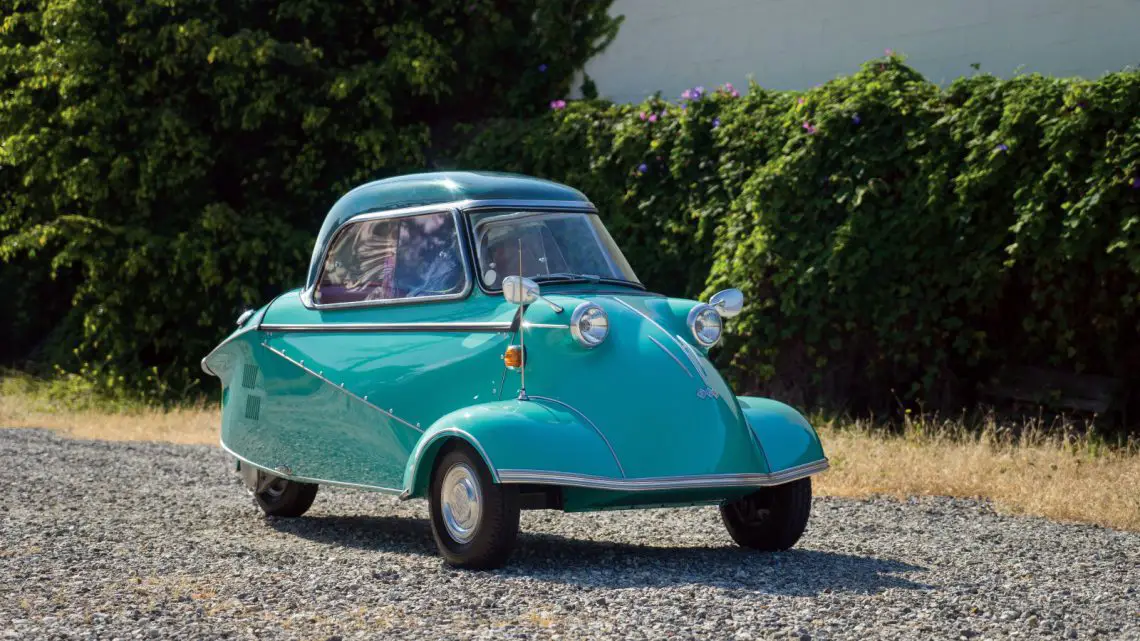
Peel P50
The 1963 Peel P50 is by far the smallest car in this list. The car even holds the official record of smallest production car in the world. The car weighs only 59 kilograms and thanks to a 49.7 cc moped engine, you can reach 60 km/h with it, if you dare. There is no reverse gear on it, but thanks to its low weight and a handle on the back, you can easily move it around. Despite its sensational record, the Peel P50 did not become a blockbuster. Only 47 were built until 1965. Its successor – the Trident – was a lot bigger.
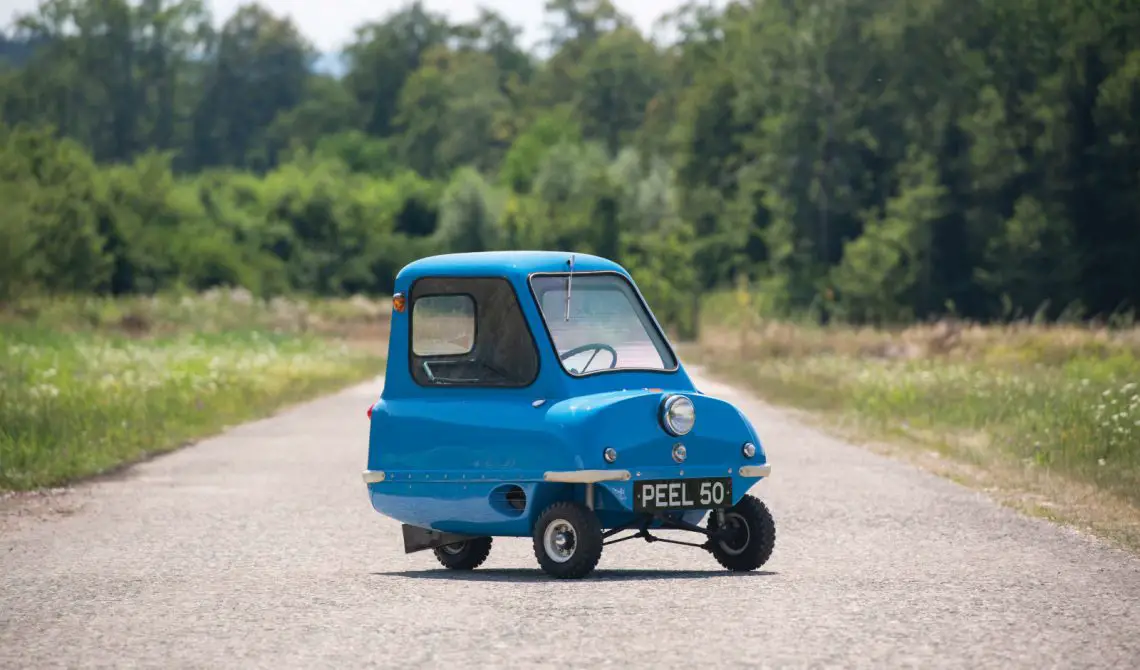
Bond Bug
No, the name has nothing to do with the famous English secret agent. The Bond Bug was a so-called “fun car” from Reliant, an English manufacturer of three-wheelers. Reliants did not have a very exciting image (putting it mildly) and the Bond Bug was supposed to change that. The Bug had a futuristic plastic body in which the roof hinged up for boarding. With its sport seats and bright colors, the Bond Bug received a lot of attention upon its introduction. However, it cost almost as much as a Mini, so not many were built. After 2,270 produced, it was over and done with.
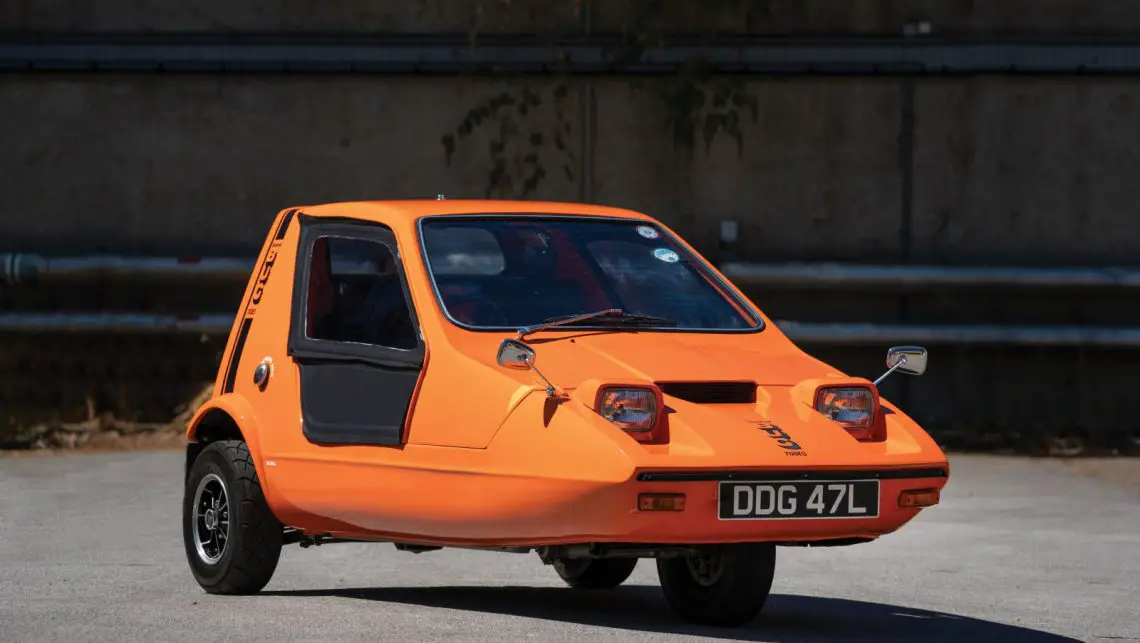
Goggomobil Coupe
‘Goggomobil’ today is a slang name for a crazy-looking car, but in the past, Goggomobils were actually built. Hans Glas Gmbh was a German manufacturer of agricultural machinery, scooters, midget cars and automobiles. Under the name Goggomobil, he produced a series of dwarf cars with different body styles. In addition to a traditional sedan, Goggomobil also produced vans, coupes and even a stylish convertible: the Dart. Isn’t it a picture?
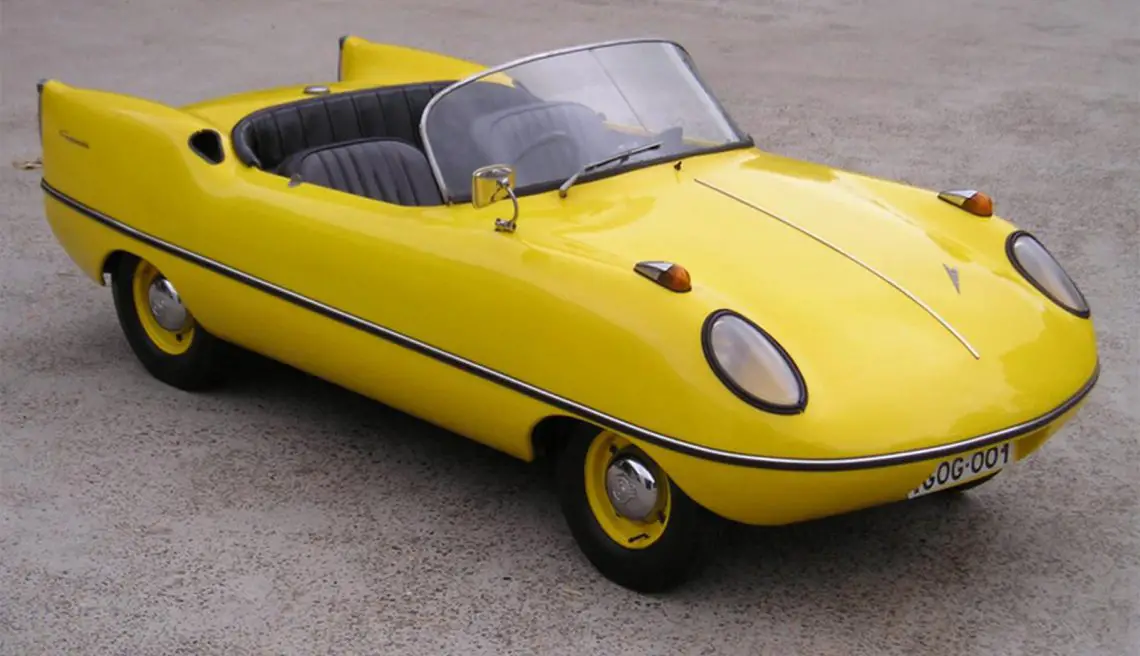
Smart CityCoupe
The microcar was revived in 1994 with the creation of Smart (Swatch Mercedes Art). The watch manufacturer Swatch and Mercedes-Benz jointly developed a small car that saw the light of day in 1998. The car stood out for its compact exterior dimensions, visible cage construction and interchangeable body parts. The cars were displayed in specially designed Smart towers. The model was soon renamed the Smart Fortwo and remained in production over three model generations through 2024.
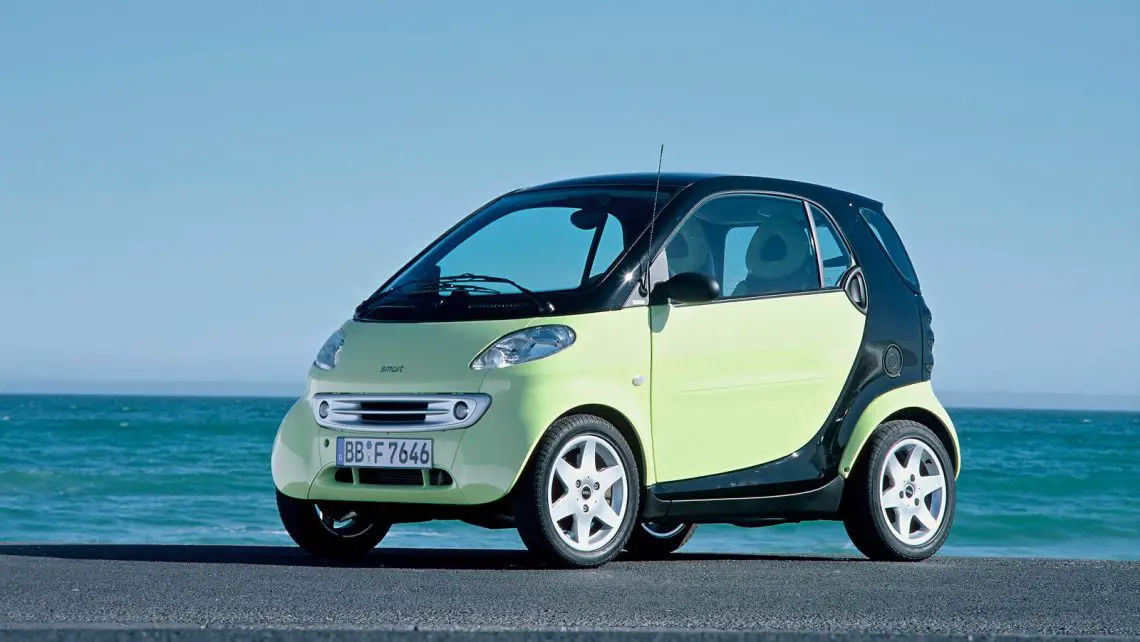
Renault Twizy
In 2013, Renault presents the electric Twizy that stands out for its radical appearance. In fact, in the Twizy you sit two people behind each other, while two hinged brackets protect you. With its detached wheels and unusual construction, the Twizy is halfway between a moped and a car. As such, the model is available with both moped and car license plates (45 km/h and 80 km/h). A delivery version of the Renault Twizy is even available.
Seat Minimo
Six years after the introduction of the Renault Twizy, Seat is demonstrating its vision of micromobility. The Minimo is fully electric and designed specifically for carsharing and autonomous driving. Ultimately, the Minimo did not make it to the production stage, but with cars like the Opel Rocks-e, the microcar segment has been revived.
